1305 scholarly books by Reaktion Books and 60
have author last names that start with R
1305 scholarly books by Reaktion Books and 60
1305 scholarly books by Reaktion Books
60 have author last names that start with R have author last names that start with R
60 have author last names that start with R have author last names that start with R
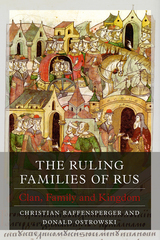
The Ruling Families of Rus
Clan, Family and Kingdom
Christian Raffensperger
Reaktion Books, 2023
A new history of the Kyivan Rus, a medieval dynastic state in eastern Europe.
Kyivan Rus’ was a state in northeastern Europe from the late ninth to the mid-sixteenth century that encompassed a variety of peoples, including Lithuanians, Polish, and Ottomans. The Ruling Families of Rus explores the region’s history through local families, revealing how the concept of family rule developed over the centuries into what we understand as dynasties today. Examining a broad range of archival sources, the authors examine the development of Rus, Lithuania, Muscovy, and Tver and their relationships with the Mongols, Byzantines, and others. The Ruling Families of Rus will appeal to scholars interested in the medieval history of eastern Europe.
Kyivan Rus’ was a state in northeastern Europe from the late ninth to the mid-sixteenth century that encompassed a variety of peoples, including Lithuanians, Polish, and Ottomans. The Ruling Families of Rus explores the region’s history through local families, revealing how the concept of family rule developed over the centuries into what we understand as dynasties today. Examining a broad range of archival sources, the authors examine the development of Rus, Lithuania, Muscovy, and Tver and their relationships with the Mongols, Byzantines, and others. The Ruling Families of Rus will appeal to scholars interested in the medieval history of eastern Europe.
[more]

The Illuminated Window
Stories across Time
Virginia Chieffo Raguin
Reaktion Books, 2023
A beautifully illustrated guide to the diverse traditions of stained glass art throughout history.
The Illuminated Window is a unique journey through stained-glass installations across history. From the twelfth to the twenty-first centuries, we find in windows stories of conflict, commemoration, devotion, and celebration. Virginia Chieffo Raguin is our guide through the cathedrals of Chartres, Canterbury, and Cologne as well as Paris’s Sainte-Chapelle, Swiss guildhalls, Iran’s Pink Mosque, Harvard Memorial Hall, Tiffany’s chapel for the World Exposition, Frank Lloyd Wright’s houses, and more. In her telling, stained glass relies on more than a single maker but on the relationship between the physical site, the patron’s aims, the work’s legibility for the spectator, and the prevailing style of the era. This is a fascinating and beautifully illustrated volume for anyone interested in stained-glass works.
The Illuminated Window is a unique journey through stained-glass installations across history. From the twelfth to the twenty-first centuries, we find in windows stories of conflict, commemoration, devotion, and celebration. Virginia Chieffo Raguin is our guide through the cathedrals of Chartres, Canterbury, and Cologne as well as Paris’s Sainte-Chapelle, Swiss guildhalls, Iran’s Pink Mosque, Harvard Memorial Hall, Tiffany’s chapel for the World Exposition, Frank Lloyd Wright’s houses, and more. In her telling, stained glass relies on more than a single maker but on the relationship between the physical site, the patron’s aims, the work’s legibility for the spectator, and the prevailing style of the era. This is a fascinating and beautifully illustrated volume for anyone interested in stained-glass works.
[more]
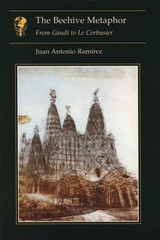
Beehive Metaphor
From Gaudí to Le Corbusier
Juan Ramírez
Reaktion Books, 2000
Since time immemorial, bees have been associated with all manner of virtues. The beehive has served as the model for an ideal society, while honey and wax have provided the basis for countless positive metaphors of sweetness and productivity. The natural architecture created by bees in their hives can be said to approach perfection. In The Beehive Metaphor, Juan Antonio Ramírez shows how this lucid modular structure had a considerable influence on the architects and artists who founded the Modern movement. Models from both traditional and "modern" or "rational" apiculture were studied and reinterpreted by such key figures as Gaudí, Wright, Mies van der Rohe, Le Corbusier and Beuys.
Inspired by his own father's obsession with bee-keeping – which wiped out the family's fortune – Ramírez examines the complex ideological, political and artistic repercussions of apian metaphors, thereby enhancing our understanding of the relationship between ecology, animal husbandry and architecture.
Inspired by his own father's obsession with bee-keeping – which wiped out the family's fortune – Ramírez examines the complex ideological, political and artistic repercussions of apian metaphors, thereby enhancing our understanding of the relationship between ecology, animal husbandry and architecture.
[more]
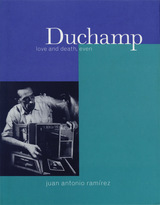
Duchamp
Love and Death, even
Juan Ramírez
Reaktion Books, 1998
Marcel Duchamp's stature in the history of art has grown steadily since the 1950s, as several artistic movements have embraced him as their founding father. But although his influence is comparable only to Picasso's, Duchamp continues to be relatively unknown outside his narrow circle of followers. This book seeks to explain his oeuvre, which has been shrouded with mystery.
Duchamp's two great preoccupations were the nature of scientific truth and a feeling for love with its natural limit, death. His works all speak of eroticism in a way that pushes the socially acceptable to its outer limits. Juan Antonio Ramirez addresses such questions as the meaning of the artist's ground-breaking ready-mades and his famous installation Etant donnés; his passionate essay reproduces all of Duchamp's important works, in addition to numerous previously unpublished visual sources. Duchamp: Love and Death, even is a seminal monograph for understanding this crucial figure of modern art.
Duchamp's two great preoccupations were the nature of scientific truth and a feeling for love with its natural limit, death. His works all speak of eroticism in a way that pushes the socially acceptable to its outer limits. Juan Antonio Ramirez addresses such questions as the meaning of the artist's ground-breaking ready-mades and his famous installation Etant donnés; his passionate essay reproduces all of Duchamp's important works, in addition to numerous previously unpublished visual sources. Duchamp: Love and Death, even is a seminal monograph for understanding this crucial figure of modern art.
[more]
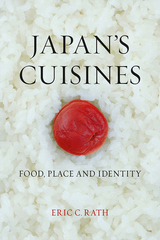
Japan's Cuisines
Food, Place and Identity
Eric C. Rath
Reaktion Books, 2016
Cuisines in Japan have an ideological dimension that cannot be ignored. In 2013, ‘traditional Japanese dietary cultures’ (washoku) was added to UNESCO’s Intangible Cultural Heritage list. Washoku’s predecessor was “national people’s cuisine,” an attempt during World War II to create a uniform diet for all citizens.
Japan’s Cuisines reveals the great diversity of Japanese cuisine and explains how Japan’s modern food culture arose through the direction of private and public institutions. Readers discover how tea came to be portrayed as the origin of Japanese cuisine, how lunch became a gourmet meal, and how regions on Japan’s periphery are reasserting their distinct food cultures. From wartime foodstuffs to modern diets, this fascinating book shows how the cuisine from the land of the rising sun shapes national, local, and personal identity.
Japan’s Cuisines reveals the great diversity of Japanese cuisine and explains how Japan’s modern food culture arose through the direction of private and public institutions. Readers discover how tea came to be portrayed as the origin of Japanese cuisine, how lunch became a gourmet meal, and how regions on Japan’s periphery are reasserting their distinct food cultures. From wartime foodstuffs to modern diets, this fascinating book shows how the cuisine from the land of the rising sun shapes national, local, and personal identity.
[more]
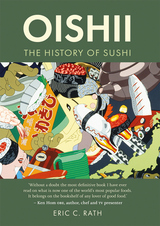
Oishii
The History of Sushi
Eric C. Rath
Reaktion Books, 2021
Sushi and sashimi are by now a global sensation and have become perhaps the best known of Japanese foods—but they are also the most widely misunderstood. Oishii: The History of Sushi reveals that sushi began as a fermented food with a sour taste, used as a means to preserve fish. This book, the first history of sushi in English, traces sushi’s development from China to Japan and then internationally, and from street food to high-class cuisine. Included are two dozen historical and original recipes that show the diversity of sushi and how to prepare it. Written by an expert on Japanese food history, Oishii is a must read for understanding sushi’s past, its variety and sustainability, and how it became one of the world’s greatest anonymous cuisines.
[more]
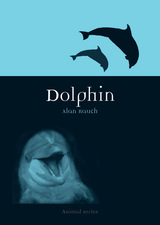
Dolphin
Alan Rauch
Reaktion Books, 2014
From Flipper to SeaWorld, dolphins have long captured our hearts. We love these friendly, intelligent mammals, and they seem to return our feelings—they enjoy interacting with swimmers and have been known to encircle people under attack by sharks. Despite our familiarity with dolphins, though, we remain ill-informed about how they evolved, how they function, and how they have interacted with humans for millennia. Dolphin dives into the dolphin’s zoology, as well as its social and cultural history, to offer a comprehensive view of these delightful creatures.
[more]
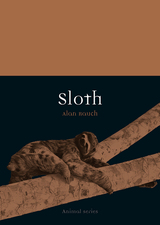
Sloth
Alan Rauch
Reaktion Books, 2023
A richly illustrated cultural and natural history of the lethargic animal—from prehistoric ancestry to modern-day memes.
Sloths are perhaps the most recognized and loved Central and South American animals, but they are not well understood. This book offers a colorful and wide-ranging biological and cultural history of these fascinating mammals. Alan Rauch explores how today’s lethargic sloths evolved from gigantic prehistoric ancestors and earned their deadly, sinful names. In praise of both these beautiful creatures and their status as icons of a stress-free life, this book shows just how fascinating, engaging, and (more often than not) inspiring these animals can be.
Sloths are perhaps the most recognized and loved Central and South American animals, but they are not well understood. This book offers a colorful and wide-ranging biological and cultural history of these fascinating mammals. Alan Rauch explores how today’s lethargic sloths evolved from gigantic prehistoric ancestors and earned their deadly, sinful names. In praise of both these beautiful creatures and their status as icons of a stress-free life, this book shows just how fascinating, engaging, and (more often than not) inspiring these animals can be.
[more]
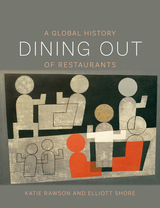
Dining Out
A Global History of Restaurants
Katie Rawson
Reaktion Books, 2019
A global history of restaurants beyond white tablecloths and maître d’s, Dining Out presents restaurants both as businesses and as venues for a range of human experiences. From banquets in twelfth-century China to the medicinal roots of French restaurants, the origins of restaurants are not singular—nor is the history this book tells. Katie Rawson and Elliott Shore highlight stories across time and place, including how chifa restaurants emerged from the migration of Chinese workers and their marriage to Peruvian businesswomen in nineteenth-century Peru; how Alexander Soyer transformed kitchen chemistry by popularizing the gas stove, pre-dating the pyrotechnics of molecular gastronomy by a century; and how Harvey Girls dispelled the ill repute of waiting tables, making rich lives for themselves across the American West. From restaurant architecture to technological developments, staffing and organization, tipping and waiting table, ethnic cuisines, and slow and fast foods, this delectably illustrated and profoundly informed and entertaining history takes us from the world’s first restaurants in Kaifeng, China, to the latest high-end dining experiences.
[more]
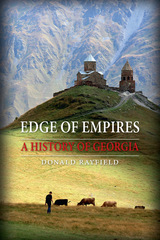
Edge of Empires
A History of Georgia
Donald Rayfield
Reaktion Books, 2012
Located at the crossroads of Western Asia and Eastern Europe, Georgia is a country of rainforests and swamps, snow and glaciers, and semi-arid plains. It has ski resorts and mineral springs, monuments and an oil pipeline. It also has one of the longest and most turbulent histories in the Christian or Near Eastern world, but no comprehensive, up-to-date account has been written about this little-known country—until now. Remedying this omission, Donald Rayfield accesses a mass of new material from recently opened archives to tell Georgia’s absorbing story.
Beginning with the first intimations of the existence of Georgians in ancient Anatolia and ending with the volatile presidency of Mikheil Saakashvili, Rayfield deals with the country’s internal politics and swings between disintegration and unity, and divulges Georgia’s complex struggles with the empires that have tried to control, fragment, or even destroy it. He describes the country’s conflicts with Xenophon’s Greeks, Arabs, invading Turks, the Crusades, Genghis Khan, the Persian Empire, the Russian Empire, and Soviet totalitarianism. A wide-ranging examination of this small but colorful country, its dramatic state-building, and its tragic political mistakes, Edge of Empires draws our eyes to this often overlooked nation.
Beginning with the first intimations of the existence of Georgians in ancient Anatolia and ending with the volatile presidency of Mikheil Saakashvili, Rayfield deals with the country’s internal politics and swings between disintegration and unity, and divulges Georgia’s complex struggles with the empires that have tried to control, fragment, or even destroy it. He describes the country’s conflicts with Xenophon’s Greeks, Arabs, invading Turks, the Crusades, Genghis Khan, the Persian Empire, the Russian Empire, and Soviet totalitarianism. A wide-ranging examination of this small but colorful country, its dramatic state-building, and its tragic political mistakes, Edge of Empires draws our eyes to this often overlooked nation.
[more]
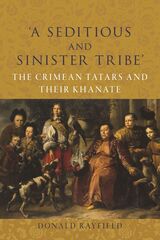
‘A Seditious and Sinister Tribe’
The Crimean Tatars and Their Khanate
Donald Rayfield
Reaktion Books, 2024
With implications for the war in Ukraine, a surprising history of the Crimean Tatars from the fifteenth century to the present day.
The Crimean Tatars were the Turkic-speaking native peoples of Crimea who established a powerful khanate in the 1440s, which remained in power until 1783. In this, the first history in English of this khanate for over one hundred years, eminent scholar Donald Rayfield shows that this misunderstood and much-feared nation was, in fact, a flourishing state with a vibrant literary culture, religious tolerance, a sophisticated constitution, and a prosperous economy. Rayfield’s book describes the establishment of the khanate, its reign, and its eventual fall, concluding with a vivid portrayal of the ruthless suppression of the Tatars—first by Russia and then the Soviet Union—and the final, effectively genocidal, invasion under Vladimir Putin.
This vibrant and ultimately tragic chronicle is essential reading for anyone interested in the background of the current war in Ukraine.
The Crimean Tatars were the Turkic-speaking native peoples of Crimea who established a powerful khanate in the 1440s, which remained in power until 1783. In this, the first history in English of this khanate for over one hundred years, eminent scholar Donald Rayfield shows that this misunderstood and much-feared nation was, in fact, a flourishing state with a vibrant literary culture, religious tolerance, a sophisticated constitution, and a prosperous economy. Rayfield’s book describes the establishment of the khanate, its reign, and its eventual fall, concluding with a vivid portrayal of the ruthless suppression of the Tatars—first by Russia and then the Soviet Union—and the final, effectively genocidal, invasion under Vladimir Putin.
This vibrant and ultimately tragic chronicle is essential reading for anyone interested in the background of the current war in Ukraine.
[more]
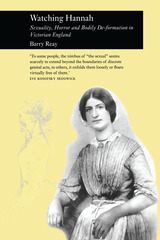
Watching Hannah
Sex, Horror and Bodily De-Formation in Victorian England
Barry Reay
Reaktion Books, 2002
Arthur Munby (1828–1910) was a Victorian gentleman from a respected family of Yorkshire lawyers. He left behind diaries that record his life-long obsession with working-class Victorian women, whom he interviewed, photographed and wrote about. This obsession led to his relationship with, and eventual secret marriage to, his maidservant Hannah Cullwick.
Working women fascinated Munby because they disrupted his Victorian ideal of femininity: their bodies were altered by physical exertion and dirt, and they were also often deformed by disease. Drawing not only on the diaries but also on a vast, untapped archive of documents, photographs, poems and sketches, Watching Hannah is far more than an account of a compulsive observer of working women and a fetishist of hard-working female hands, however. The author analyzes Munby's obsessions in relation to changing definitions of gender, sexual identity and class to reveal wider male preoccupations with femininity, the body, deformity, masculinity and – most of all – sexuality, at a pivotal point in European history.
Working women fascinated Munby because they disrupted his Victorian ideal of femininity: their bodies were altered by physical exertion and dirt, and they were also often deformed by disease. Drawing not only on the diaries but also on a vast, untapped archive of documents, photographs, poems and sketches, Watching Hannah is far more than an account of a compulsive observer of working women and a fetishist of hard-working female hands, however. The author analyzes Munby's obsessions in relation to changing definitions of gender, sexual identity and class to reveal wider male preoccupations with femininity, the body, deformity, masculinity and – most of all – sexuality, at a pivotal point in European history.
[more]
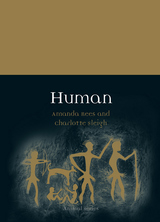
Human
Amanda Rees
Reaktion Books, 2020
What does it mean to be human? And what, if anything, does it have to do with being a member of the animal species Homo sapiens? This dazzling book gets to the very heart of our rather unscientific motivations and prejudices, showing how they are of great use in resolving the world’s biggest problems. From beasts to aliens, this book explores widely discussed but often problematic links between humans and six other beings, tackling deep philosophical questions including humanity’s common purpose, life’s meaning, and what it means to be accepted as part of a community. Global in its outlook and illustrated with stunning pictures, Human is a powerful, funny, and iconoclastic antidote to post-humanism.
[more]
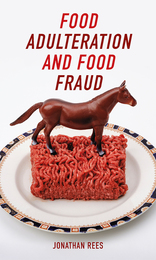
Food Adulteration and Food Fraud
Jonathan Rees
Reaktion Books, 2020
What do we really know about the food we eat? A firestorm of recent food-fraud cases, from the US honey-laundering scandal to the forty-year-old frozen “zombie” meat smuggled into China, to horse-meat episodes in the United Kingdom, suggests fraudulent and intentional acts of food adulteration are on the rise. While often harmless, some incidents have resulted in serious public health consequences. At the heart of these dubious practices are everyone from large food processors to small-time criminals, while many consumers are becoming increasingly concerned about this malfeasance.
In this book, Jonathan Rees examines the complex causes and surprising effects of adulteration and fraud across the global food chain. Covering comestibles of all kinds from around the globe, Rees describes the different types of contamination, the role and effectiveness of government regulation, and our willingness to ignore deception if the groceries we purchase are cheap or convenient. Pithy, punchy, and cogent, Food Adulteration and Food Fraud offers important insight into this vital problem of human consumption.
In this book, Jonathan Rees examines the complex causes and surprising effects of adulteration and fraud across the global food chain. Covering comestibles of all kinds from around the globe, Rees describes the different types of contamination, the role and effectiveness of government regulation, and our willingness to ignore deception if the groceries we purchase are cheap or convenient. Pithy, punchy, and cogent, Food Adulteration and Food Fraud offers important insight into this vital problem of human consumption.
[more]

Bedbug
Klaus Reinhardt
Reaktion Books, 2018
Few animals elicit such a profound combination of horror, fear, and disgust as the bedbug. Uninvited, bedbugs invade our most private spaces (our beds), take away our blood, and afterwards, impudently mark their territory (our sheets). In this book, Klaus Reinhardt investigates the natural and human history of these vampiric insects, examining how ordinary people, travelers, writers, and scientists have experienced bedbugs; how we have coped with them; and what we have done to combat them.
From fossils to classical Greek plays to the beds of medieval travelers, history is a rash of bedbugs. So ubiquitous and so loathed are these contentious creatures, the first recorded use of the insect moniker “bug” refers to them, a word that now means any sort of glitch or invader—from computer errors to snooping devices. Lifting the covers on this pestilential history, Reinhardt shows how bedbugs were not only the center of bitter fights among scientists, but also how the bugs’ dangerous aspects were foregrounded, and how bedbugs’ peculiar mating habits fueled public revulsion. Richly illustrated, full of the latest bedbug research, and sure to make you itch, Bedbug closes with a plea for sanguine tolerance—something humans and bedbugs will need alike as worldwide infestation rates soar.
From fossils to classical Greek plays to the beds of medieval travelers, history is a rash of bedbugs. So ubiquitous and so loathed are these contentious creatures, the first recorded use of the insect moniker “bug” refers to them, a word that now means any sort of glitch or invader—from computer errors to snooping devices. Lifting the covers on this pestilential history, Reinhardt shows how bedbugs were not only the center of bitter fights among scientists, but also how the bugs’ dangerous aspects were foregrounded, and how bedbugs’ peculiar mating habits fueled public revulsion. Richly illustrated, full of the latest bedbug research, and sure to make you itch, Bedbug closes with a plea for sanguine tolerance—something humans and bedbugs will need alike as worldwide infestation rates soar.
[more]
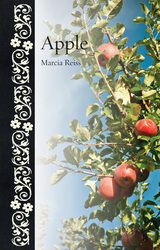
Apple
Marcia Reiss
Reaktion Books, 2015
Gala and Honeycrisp. Pink Lady and Pacific Rose. King Luscious and Winesap. The names of apples are as juicy as the fruit itself. One of the most widely distributed fruits on the planet, apples have always meant something beyond food and drink—their seeds have been planted deep within the myths, religion, and art of nearly every culture. They are symbols of beauty, desire, and sin; signs of hidden poisons and healthy eating; emblems of computers, phones, and music. Exploring the symbolism, art, and literature of the apple, as well as its botanical background, Marcia Reiss follows this iconic fruit from its origins to its now-ubiquitous presence in our world.
Journeying back to the apple’s germination in the mountains of Central Asia, Reiss travels along the Silk Road to Europe and the New World. She reveals that, from Charlemagne to Johnny Appleseed to the colonization of South Africa, where settlers were required to plant apple orchards that led to the development of new towns, apples have become a global commodity. In addition to delving into the latest debates about chemical sprays, Reiss looks at the rise of heirloom orchards and the hopes and fears of genetic developments. She also tells the parallel tale of apple cider, its decline during the Temperance Movement and its return as an artisanal alternative to wine. Beautifully illustrated with historic and contemporary images and containing a directory of popular and heirloom varieties, Apple is a book ripe for devouring.
Journeying back to the apple’s germination in the mountains of Central Asia, Reiss travels along the Silk Road to Europe and the New World. She reveals that, from Charlemagne to Johnny Appleseed to the colonization of South Africa, where settlers were required to plant apple orchards that led to the development of new towns, apples have become a global commodity. In addition to delving into the latest debates about chemical sprays, Reiss looks at the rise of heirloom orchards and the hopes and fears of genetic developments. She also tells the parallel tale of apple cider, its decline during the Temperance Movement and its return as an artisanal alternative to wine. Beautifully illustrated with historic and contemporary images and containing a directory of popular and heirloom varieties, Apple is a book ripe for devouring.
[more]

Lily
Marcia Reiss
Reaktion Books, 2013
The lily is a flower of contradictions. It represents both life and death, appearing at weddings and funerals. In their pure white form, lilies are a symbol of innocence, chastity, and purity of heart, but in contrast, the highly fragrant and intensely colored orange lilies symbolize passion. In Lily, Marcia Reiss explores these paradoxes, tracing the flower’s cultural significance in art, literature, religion, and popular entertainment throughout history.
Reiss journeys from the tomb carvings of ancient Egypt to the paintings of Claude Monet, Georgia O’Keeffe, and Salvador Dalí, exploring the lily as a subject of fascination and obsession. Unearthing many absorbing facts and fables about the blossom, she examines its use in cuisine and reveals them to have been a source of food and medicine in China for centuries. While Reiss focuses her attention on true lilies and the ornamental hybrids breeders have derived from them, she also provides extensive information about a wide variety of popular lilies, including daylilies, lilies of the valley, water lilies, and calla lilies. Filled with striking illustrations of these gorgeous plants, Lily is a book for gardeners and lily admirers alike.
[more]
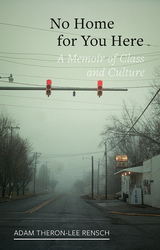
No Home for You Here
A Memoir of Class and Culture
Adam Theron-Lee Rensch
Reaktion Books, 2020
No Home for You Here is a memoir of a life lived in the shadow of Ronald Reagan. Raised in rural Ohio, Adam Theron-Lee Rensch tells the story of a millennial trying—and failing—to leave behind the shame of growing up poor in the middle of nowhere. Interweaving personal narrative and political criticism with recent social and political history, No Home for You Here shows how the interrelationship of class, culture, and identity stifles working-class solidarity by constructing an imagined cultural divide that those in power use to maintain the status quo. With one foot on each side of this division, Rensch moves between the flat horizon of the Midwest and the densely populated streets of the city, bearing witness to the tragic effects of a precarious free-market economy on family and friends. Rather than wallowing in despair, however, No Home for You Here is a timely, passionate call for class consciousness in an era of economic crisis and staggering inequality.
[more]
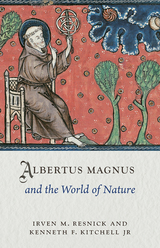
Albertus Magnus and the World of Nature
Irven M. Resnick
Reaktion Books, 2022
The first comprehensive English-language biography of Albert the Great in a century.
As well as being an important medieval theologian, Albertus Magnus (Albert the Great) also made significant contributions to the study of astronomy, geography, and natural philosophy, and his studies of the natural world led Pope Pius XII to declare Albert the patron saint of the natural sciences. Dante Alighieri acknowledged a substantial debt to Albert’s work, and in the Divine Comedy placed him equal with his celebrated student and brother Dominican, Thomas Aquinas.
In this book, the first full, scholarly biography in English for nearly a century, Irven M. Resnick and Kenneth F. Kitchell Jr. narrate Albert’s key contributions to natural philosophy and the history of science, while also revealing the insights into medieval life and customs that his writings provide.
As well as being an important medieval theologian, Albertus Magnus (Albert the Great) also made significant contributions to the study of astronomy, geography, and natural philosophy, and his studies of the natural world led Pope Pius XII to declare Albert the patron saint of the natural sciences. Dante Alighieri acknowledged a substantial debt to Albert’s work, and in the Divine Comedy placed him equal with his celebrated student and brother Dominican, Thomas Aquinas.
In this book, the first full, scholarly biography in English for nearly a century, Irven M. Resnick and Kenneth F. Kitchell Jr. narrate Albert’s key contributions to natural philosophy and the history of science, while also revealing the insights into medieval life and customs that his writings provide.
[more]

Railway
George Revill
Reaktion Books, 2012
In the nineteenth century, railways were viewed as a symbol of progress and confidence in technological modernity. In the twenty-first century, the frustrations of gridlocked traffic, record-high gas prices, and the looming fears of climate change have transformed the railway system once again into a symbol of hope that provides the possibility of an environmentally sustainable future. In Railway, George Revill examines the technology and politics of railway history, as well as related themes such as mobility, identity, design, marketing, and sustainability.
In both practical and symbolic senses the cultural meanings of railways continue to play a role in how people organize and respond to modern environments, social problems, and technologies. Revill draws from art, literature, music, and film to illustrate how the railway carries meaning for all of us—creating connections and separations, detachment and involvement—from the routine commuter to the enthusiast. As Revill shows, railways inform our everyday language—from fast-track to side-track to going off the rails—and continue to fascinate us today.
In this wide-ranging and well-illustrated look at railways across the globe, Revill ultimately reveals how central they are to our understanding of modern everyday life.
[more]
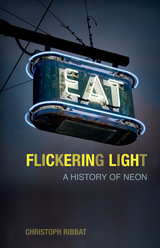
Flickering Light
A History of Neon
Christoph Ribbat
Reaktion Books, 2013
Without neon, Las Vegas might still be a sleepy desert town in Nevada and Times Square merely another busy intersection in New York City. Transformed by the installation of these brightly colored signs, these destinations are now world-famous, representing the vibrant heart of popular culture. But for some, neon lighting represents the worst of commercialism. Energized by the conflicting love and hatred people have for neon, Flickering Light explores its technological and intellectual history, from the discovery of the noble gas in late nineteenth-century London to its fading popularity today.
Christoph Ribbat follows writers, artists, and musicians—from cultural critic Theodor Adorno, British rock band the Verve, and artist Tracey Emin to Vladimir Nabokov, Langston Hughes, and American country singers—through the neon cities in Europe, America, and Asia, demonstrating how they turned these blinking lights and letters into metaphors of the modern era. He examines how gifted craftsmen carefully sculpted neon advertisements, introducing elegance to modern metropolises during neon’s heyday between the wars followed by its subsequent popularity in Las Vegas during the 1950s and '60s. Ribbat ends with a melancholy discussion of neon’s decline, describing how these glowing signs and installations came to be seen as dated and characteristic of run-down neighborhoods.
From elaborate neon lighting displays to neglected diner signs with unlit letters, Flickering Light tells the engrossing story of how a glowing tube of gas took over the world—and faded almost as quickly as it arrived.
[more]

St George
A Saint for All
Samantha Riches
Reaktion Books, 2015
The image of St. George—atop his horse, lance plunged halfway into a dragon’s body—is so familiar to us that we take for granted what a long history it has had. As Samantha Riches demonstrates in this book, St. George is easily one of the most transported icons across cultures, and his history is the history of myth writ large. Traveling in Georgia, Greece, Malta, Belgium, Lebanon, Palestine, Ethiopia, Estonia, and many other places, she offers a fascinating look at one of the most popular mythical figures of all time.
Riches traces St. George in his various appearances and guises across a wealth of religions and traditions. From Eastern Orthodox, Coptic, and Western European Christian traditions, she follows his trail into Islam, Hinduism, Judaism, Candomblé, and the many pagan systems where he has functioned a symbol of nature, springtime, and healing. Exploring the innumerable ways artists, poets, and painters have engaged his mythical import, she shows him to be at the center of many political divisions, where he has been used to advance one agenda or another. Drawing together many aspects of the cult of St. George, Riches provides a fascinating history of an enduring icon.
Riches traces St. George in his various appearances and guises across a wealth of religions and traditions. From Eastern Orthodox, Coptic, and Western European Christian traditions, she follows his trail into Islam, Hinduism, Judaism, Candomblé, and the many pagan systems where he has functioned a symbol of nature, springtime, and healing. Exploring the innumerable ways artists, poets, and painters have engaged his mythical import, she shows him to be at the center of many political divisions, where he has been used to advance one agenda or another. Drawing together many aspects of the cult of St. George, Riches provides a fascinating history of an enduring icon.
[more]
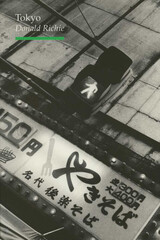
Tokyo
A View of the City
Donald Richie
Reaktion Books, 1999
Donald Richie takes the reader on a revealing tour of the different districts of Japan's capital city. Starting from the original centre of Tokyo – the Imperial Palace – Richie branches outwards, taking in other areas such as Yoshiwara, the original red-light district, and Ginza, the world-famous shipping street. The author has kept a diary for the entire time he has lived in Tokyo, and excerpts from it provide on-the-spot insights into the significance of fashions and fads in Japanese culture (for example the recent Tamagochi craze), as well as the various aspects of life in a small neighborhood. Richie gives a real sense of how Japanese society has changed since the Second World War, yet remained rooted in its past.
With the eclectic eye and ear of a film-maker, Richie describes the flavor and idiosyncrasies of this chaotic, teeming city. Tokyo is illustrated with 30 intriguing photographs by Seattle-based photographer, Joel Sackett.
With the eclectic eye and ear of a film-maker, Richie describes the flavor and idiosyncrasies of this chaotic, teeming city. Tokyo is illustrated with 30 intriguing photographs by Seattle-based photographer, Joel Sackett.
[more]
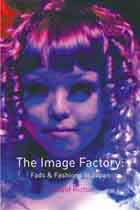
Image Factory
Fads and Fashions in Japan
Donald Richie
Reaktion Books, 2003
Just as a person contrives a style, the purpose of which is integration and the effect of which is presentation, so a nation collectively projects an appearance, a "national" style. Such styles are made of many layers. The deepest layer is composed of the immutable and the traditional. Nearer the surface floats fashion, changeable but sometimes more abiding. And frothing on the surface is fad.
By definition a fad is novel and appears from outside. Fads must have instant appeal and do not have a long shelf life. In Japan, an assortment of islands, the outside is often the quality that defines the inside.
Japan has a history of chasing fads and fashion. Since the 19th century, foreign products have been welcomed in, from the cult for "squeaky shoes" in the mid-19th century to the current fad for virtual reality girlfriends. Japan’s mandate was that, having been opened late, it had to hurry to catch up. Fads provide both a social distraction and a sense of cohesion, indicating not only foreign importation but also native adaptation.
The Image Factory is both an investigation into fads, fashions and style – such as US Army surplus uniforms, "pachinko", mutating hair colors – and an appreciation of their inherent meanings. The Japanese have seized upon fads and fashion as an arm of enterprise to a much greater extent than elsewhere in the world. Ephemerality has been put to work, the transient has become industrialized, and the results are highly conspicuous.
By definition a fad is novel and appears from outside. Fads must have instant appeal and do not have a long shelf life. In Japan, an assortment of islands, the outside is often the quality that defines the inside.
Japan has a history of chasing fads and fashion. Since the 19th century, foreign products have been welcomed in, from the cult for "squeaky shoes" in the mid-19th century to the current fad for virtual reality girlfriends. Japan’s mandate was that, having been opened late, it had to hurry to catch up. Fads provide both a social distraction and a sense of cohesion, indicating not only foreign importation but also native adaptation.
The Image Factory is both an investigation into fads, fashions and style – such as US Army surplus uniforms, "pachinko", mutating hair colors – and an appreciation of their inherent meanings. The Japanese have seized upon fads and fashion as an arm of enterprise to a much greater extent than elsewhere in the world. Ephemerality has been put to work, the transient has become industrialized, and the results are highly conspicuous.
[more]
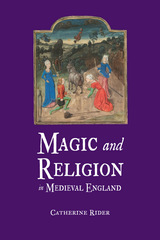
Magic and Religion in Medieval England
Catherine Rider
Reaktion Books, 2012
During the Middle Ages, many occult rituals and beliefs existed and were practiced alongside those officially sanctioned by the church. While educated clergy condemned some of these as magic, many of these practices involved religious language, rituals, or objects. For instance, charms recited to cure illnesses invoked God and the saints, and love spells used consecrated substances such as the Eucharist. Magic and Religion in Medieval England explores the entanglement of magical practices and the clergy during the Middle Ages, uncovering how churchmen decided which of these practices to deem acceptable and examining the ways they persuaded others to adopt their views.
Covering the period from 1215 to the Reformation, Catherine Rider traces the change in the church’s attitude to vernacular forms of magic. She shows how this period brought the clergy more closely into contact with unofficial religious practices than ever before, and how this proximity prompted them to draw up precise guidelines on distinguishing magic from legitimate religion. Revealing the necessity of improving clerical education and the pastoral care of the laity, Magic and Religion in Medieval England provides a fascinating picture of religious life during this period.
[more]
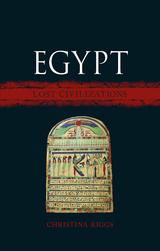
Egypt
Lost Civilizations
Christina Riggs
Reaktion Books, 2017
From Roman villas to Hollywood films, ancient Egypt has been a source of fascination and inspiration in many other cultures. But why, exactly, has this been the case? In this book, Christina Riggs examines the history, art, and religion of ancient Egypt to illuminate why it has been so influential throughout the centuries. In doing so, she shows how the ancient past has always been used to serve contemporary purposes.
Often characterized as a lost civilization that was discovered by adventurers and archeologists, Egypt has meant many things to many different people. Ancient Greek and Roman writers admired ancient Egyptian philosophy, and this admiration would influence ideas about Egypt in Renaissance Europe as well as the Arabic-speaking world. By the eighteenth century, secret societies like the Freemasons looked to ancient Egypt as a source of wisdom, but as modern Egypt became the focus of Western military strategy and economic exploitation in the nineteenth and early twentieth centuries, its ancient remains came to be seen as exotic, primitive, or even dangerous, tangled in the politics of racial science and archaeology. The curse of the pharaohs or the seductiveness of Cleopatra were myths that took on new meanings in the colonial era, while ancient Egypt also inspired modernist, anti-colonial movements in the arts, such as in the Harlem Renaissance and Egyptian Pharaonism. Today, ancient Egypt—whether through actual relics or through cultural homage—can be found from museum galleries to tattoo parlors. Riggs helps us understand why this “lost civilization” continues to be a touchpoint for defining—and debating—who we are today.
Often characterized as a lost civilization that was discovered by adventurers and archeologists, Egypt has meant many things to many different people. Ancient Greek and Roman writers admired ancient Egyptian philosophy, and this admiration would influence ideas about Egypt in Renaissance Europe as well as the Arabic-speaking world. By the eighteenth century, secret societies like the Freemasons looked to ancient Egypt as a source of wisdom, but as modern Egypt became the focus of Western military strategy and economic exploitation in the nineteenth and early twentieth centuries, its ancient remains came to be seen as exotic, primitive, or even dangerous, tangled in the politics of racial science and archaeology. The curse of the pharaohs or the seductiveness of Cleopatra were myths that took on new meanings in the colonial era, while ancient Egypt also inspired modernist, anti-colonial movements in the arts, such as in the Harlem Renaissance and Egyptian Pharaonism. Today, ancient Egypt—whether through actual relics or through cultural homage—can be found from museum galleries to tattoo parlors. Riggs helps us understand why this “lost civilization” continues to be a touchpoint for defining—and debating—who we are today.
[more]
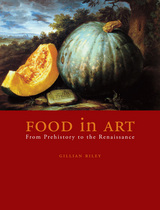
Food in Art
From Prehistory to the Renaissance
Gillian Riley
Reaktion Books, 2014
From Giuseppe Arcimboldo’s painting of the Holy Roman Emperor Rudolf II as a heap of fruits and vegetables to artists depicting lavish banquets for wealthy patrons, food and art are remarkably intertwined. In this richly illustrated book, Gillian Riley provides fresh insight into how the relationship between humans and food has been portrayed in art from ancient times to the Renaissance.
Exploring a myriad of images including hunting scenes depicted in Egyptian Books of Hours and fruit in Roman wall paintings and mosaics, Riley argues that works of art present us with historical information about the preparation and preservation of food that written sources do not—for example, how meat, fish, cheese, and vegetables were dried, salted, and smoked, or how honey was used to conserve fruit. She also examines what these works reveal to us about how animals and plants were raised, cultivated, hunted, harvested, and traded throughout history. Looking at the many connections between food, myth, and religion, she surveys an array of artworks to answer questions such as whether the Golden Apples of the Hesperides were in fact apples or instead quinces or oranges. She also tries to understand whether our perception of fruit in Christian art is skewed by their symbolic meaning.
With 170 color images of fine art, illuminated manuscripts, mosaics, frescoes, stained glass, and funerary monuments, Food in Art is an aesthetically pleasing and highly readable book for art buffs and foodies alike.
Exploring a myriad of images including hunting scenes depicted in Egyptian Books of Hours and fruit in Roman wall paintings and mosaics, Riley argues that works of art present us with historical information about the preparation and preservation of food that written sources do not—for example, how meat, fish, cheese, and vegetables were dried, salted, and smoked, or how honey was used to conserve fruit. She also examines what these works reveal to us about how animals and plants were raised, cultivated, hunted, harvested, and traded throughout history. Looking at the many connections between food, myth, and religion, she surveys an array of artworks to answer questions such as whether the Golden Apples of the Hesperides were in fact apples or instead quinces or oranges. She also tries to understand whether our perception of fruit in Christian art is skewed by their symbolic meaning.
With 170 color images of fine art, illuminated manuscripts, mosaics, frescoes, stained glass, and funerary monuments, Food in Art is an aesthetically pleasing and highly readable book for art buffs and foodies alike.
[more]
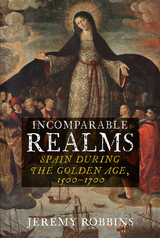
Incomparable Realms
Spain during the Golden Age, 1500–1700
Jeremy Robbins
Reaktion Books, 2022
A sumptuous history of Golden Age Spain that explores the irresistible tension between heavenly and earthly realms.
Incomparable Realms offers a vision of Spanish culture and society during the so-called Golden Age, the period from 1500 to 1700 when Spain unexpectedly rose to become the dominant European power. But in what ways was this a Golden Age, and for whom? The relationship between the Habsburg monarchy and the Roman Catholic Church shaped the period, with both constructing narratives to bind Spanish society together. Incomparable Realms unpicks the impact of these two historical forces on thought and culture and examines the people and perspectives such powerful projections sought to eradicate.
The book shows that the tension between the heavenly and earthly realms, and in particular the struggle between the spiritual and the corporeal, defines Golden Age culture. In art and literature, mystical theology and moral polemic, ideology, doctrine, and everyday life, the problematic pull of the body and the material world is the unacknowledged force behind early modern Spain. Life is a dream, as the title of Calderón’s famous play of the period proclaimed, but there is always a body dreaming it.
Incomparable Realms offers a vision of Spanish culture and society during the so-called Golden Age, the period from 1500 to 1700 when Spain unexpectedly rose to become the dominant European power. But in what ways was this a Golden Age, and for whom? The relationship between the Habsburg monarchy and the Roman Catholic Church shaped the period, with both constructing narratives to bind Spanish society together. Incomparable Realms unpicks the impact of these two historical forces on thought and culture and examines the people and perspectives such powerful projections sought to eradicate.
The book shows that the tension between the heavenly and earthly realms, and in particular the struggle between the spiritual and the corporeal, defines Golden Age culture. In art and literature, mystical theology and moral polemic, ideology, doctrine, and everyday life, the problematic pull of the body and the material world is the unacknowledged force behind early modern Spain. Life is a dream, as the title of Calderón’s famous play of the period proclaimed, but there is always a body dreaming it.
[more]
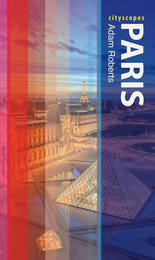
Paris
Adam Roberts
Reaktion Books, 2017
It is one of the world’s most iconic cities, the center of romance, cuisine, and high culture, a place we are all implored to visit in spring and then forever hold in our hearts: Paris. But behind these familiar notions lies a bustling and deeply complex metropolis, one that offers visitors an unending array of surprises. This book takes readers and travelers to this other Paris, a city of love and danger alike, a city imbued with over 2,000 years of history, which Adam Roberts lovingly recounts alongside an expert tour of the city’s sights, sounds, and flavors.
Roberts tells the story of how a provincial backwater rose up to become one of the richest, most powerful, and most visited cities in Europe, a world leader in fashion, the arts, and gastronomy. He takes us back two millennia to when roaming Celtic tribes first set up camp on the banks of the Seine, and from there moves through turbulent centuries full of the fates and fortunes of kings, marked by invasions, revolutions, and magnificent buildings constructed one after the other. He explores the city’s renowned gothic architecture, the urban planning that has been revised throughout history, the mammoth museums that have been erected to preserve its artistic legacy, and the vibrant street culture that hosts markets, performers, and Paris’s own flâneurs every single day. Along the way, he points out countless hidden gems travelers rarely make it to: from a vintage candy shop to a museum of romantic life, from a hidden garden inside a hospital to a converted hair salon that hosts—of all things—table tennis tournaments. And of course he shows readers where to eat, catch a show, and go for gorgeous sunset strolls.
Offering a comprehensive but easily digestible overview, Paris is the perfect book for anyone planning a visit to the city or anyone who simply loves it from afar.
Roberts tells the story of how a provincial backwater rose up to become one of the richest, most powerful, and most visited cities in Europe, a world leader in fashion, the arts, and gastronomy. He takes us back two millennia to when roaming Celtic tribes first set up camp on the banks of the Seine, and from there moves through turbulent centuries full of the fates and fortunes of kings, marked by invasions, revolutions, and magnificent buildings constructed one after the other. He explores the city’s renowned gothic architecture, the urban planning that has been revised throughout history, the mammoth museums that have been erected to preserve its artistic legacy, and the vibrant street culture that hosts markets, performers, and Paris’s own flâneurs every single day. Along the way, he points out countless hidden gems travelers rarely make it to: from a vintage candy shop to a museum of romantic life, from a hidden garden inside a hospital to a converted hair salon that hosts—of all things—table tennis tournaments. And of course he shows readers where to eat, catch a show, and go for gorgeous sunset strolls.
Offering a comprehensive but easily digestible overview, Paris is the perfect book for anyone planning a visit to the city or anyone who simply loves it from afar.
[more]
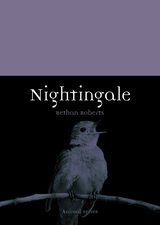
Nightingale
Bethan Roberts
Reaktion Books, 2021
A melodious paean to the natural history and symbolic meaning of the most prized, poetized, and mythologized of songbirds.
The nightingale has a unique place in cultural history: the most prized of songbirds, it has inspired more poems than any other creature, and it is also the most mythologized of birds. Nightingale juxtaposes the bird of poetry, music, myth, and lore with the living bird of wood and scrubland, unpicking the entangled relationship between them. Covering a huge range of poets, musicians, artists, nature writers, and natural historians—from Aristotle, Keats, and Vera Lynn to Bob Dylan—Nightingale charts our fascination through history with this nondescript yet melodious little brown bird. It also documents the nightingale’s disappearance from British breeding grounds and the implications this has for nightingale conservation.
The nightingale has a unique place in cultural history: the most prized of songbirds, it has inspired more poems than any other creature, and it is also the most mythologized of birds. Nightingale juxtaposes the bird of poetry, music, myth, and lore with the living bird of wood and scrubland, unpicking the entangled relationship between them. Covering a huge range of poets, musicians, artists, nature writers, and natural historians—from Aristotle, Keats, and Vera Lynn to Bob Dylan—Nightingale charts our fascination through history with this nondescript yet melodious little brown bird. It also documents the nightingale’s disappearance from British breeding grounds and the implications this has for nightingale conservation.
[more]
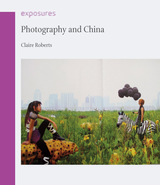
Photography and China
Claire Roberts
Reaktion Books, 2013
With its lush and diverse landscapes, ancient ruins, and stunning architecture, China is a photographer’s dream. Exploring this visually rich and evocative country, Photography and China highlights Chinese photographers and subjects from the inception of photography to the present day.
Drawing on works in museums, and archival and private collections across China, the United States, Europe, and Australia, Claire Roberts locates images from commercial, art, and documentary photography within the broader context of Chinese history. She focuses on the images as well as the studios and individuals who created them, describing the long tradition of Chinese artistic culture into which photography was first absorbed and subsequently expanded. As she recounts the stories of practitioners—from China and overseas—who were agents in that process of change, she also examines the commercial, political, and artistic purposes for which they used photography. Featuring one hundred striking, little-known images, Photography and China will make a significant contribution to photography, Chinese art, and twentieth-century history.
[more]
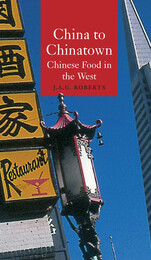
China to Chinatown
Chinese Food in the West
J.A.G. Roberts
Reaktion Books, 2004
China to Chinatown tells the story of one of the most notable examples of the globalization of food: the spread of Chinese recipes, ingredients and cooking styles to the Western world. Beginning with the accounts of Marco Polo and Franciscan missionaries, J.A.G. Roberts describes how Westerners’ first impressions of Chinese food were decidedly mixed, with many regarding Chinese eating habits as repugnant. Chinese food was brought back to the West merely as a curiosity.
The Western encounter with a wider variety of Chinese cuisine dates from the first half of the 20th century, when Chinese food spread to the West with emigrant communities. The author shows how Chinese cooking has come to be regarded by some as among the world’s most sophisticated cuisines, and yet is harshly criticized by others, for example on the grounds that its preparation involves cruelty to animals.
Roberts discusses the extent to which Chinese food, as a facet of Chinese culture overseas, has remained differentiated, and questions whether its ethnic identity is dissolving.
Written in a lively style, the book will appeal to food historians and specialists in Chinese culture, as well as to readers interested in Chinese cuisine.
The Western encounter with a wider variety of Chinese cuisine dates from the first half of the 20th century, when Chinese food spread to the West with emigrant communities. The author shows how Chinese cooking has come to be regarded by some as among the world’s most sophisticated cuisines, and yet is harshly criticized by others, for example on the grounds that its preparation involves cruelty to animals.
Roberts discusses the extent to which Chinese food, as a facet of Chinese culture overseas, has remained differentiated, and questions whether its ethnic identity is dissolving.
Written in a lively style, the book will appeal to food historians and specialists in Chinese culture, as well as to readers interested in Chinese cuisine.
[more]
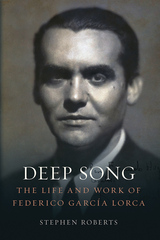
Deep Song
The Life and Work of Federico García Lorca
Stephen Roberts
Reaktion Books, 2020
Federico García Lorca (1898–1936) is perhaps Spain’s most famous writer and cultural icon. By the age of thirty, he had become the most successful member of a brilliant generation of poets, winning critical and popular acclaim by fusing traditional and avant-garde themes and techniques. He would go on to reinvent Spanish theater too, writing bold, experimental, and often shocking plays that dared openly to explore both female and homosexual desire. A vibrant and mercurial personality, by the time Lorca visited Argentina in late 1933, he had become the most celebrated writer and cultural figure in the Spanish-speaking world.
But Lorca’s fame could not survive politics: his identification with the splendor of the Second Spanish Republic (1931–36) was one of the reasons behind Lorca’s murder in August 1936 at the hands of right-wing insurgents at the start of the Spanish Civil War. In this biography, Stephen Roberts seeks out the roots of the man and his work in the places in which Lorca lived and died: the Granadan countryside where he spent his childhood; the Granada and Madrid of the 1910s, ’20s, and ’30s where he received his education and achieved success as a writer; his influential visits to Catalonia, New York, Cuba, and Argentina; and the mountains outside Granada where his body still lies in an undiscovered grave. What emerges is a fascinating portrait of a complex and brilliant man as well as new insight into the works that helped to make his name.
But Lorca’s fame could not survive politics: his identification with the splendor of the Second Spanish Republic (1931–36) was one of the reasons behind Lorca’s murder in August 1936 at the hands of right-wing insurgents at the start of the Spanish Civil War. In this biography, Stephen Roberts seeks out the roots of the man and his work in the places in which Lorca lived and died: the Granadan countryside where he spent his childhood; the Granada and Madrid of the 1910s, ’20s, and ’30s where he received his education and achieved success as a writer; his influential visits to Catalonia, New York, Cuba, and Argentina; and the mountains outside Granada where his body still lies in an undiscovered grave. What emerges is a fascinating portrait of a complex and brilliant man as well as new insight into the works that helped to make his name.
[more]

Blaise Cendrars
The Invention of Life
Eric Robertson
Reaktion Books, 2022
A new account of the life and work of innovative, pseudonymous French poet, novelist, essayist, and film writer Blaise Cendrars.
In 1912 the young Frédéric-Louis Sauser arrived in France, carrying an experimental poem and a new identity. Blaise Cendrars was born. Over the next half-century, Cendrars wrote innovative poems, novels, essays, film scripts, and autobiographical prose. His groundbreaking books and collaborations with artists such as Sonia Delaunay and Fernand Léger remain astonishingly modern today. Cendrars’s writings reflect his insatiable curiosity, his vast knowledge, which was largely self-taught, and his love of everyday life.
In this new account, Eric Robertson examines Cendrars’s work against a turbulent historical background and reassesses his contribution to twentieth-century literature. Robertson shows how Cendrars is as relevant today as ever and deserves a wider readership in the English-speaking world.
In 1912 the young Frédéric-Louis Sauser arrived in France, carrying an experimental poem and a new identity. Blaise Cendrars was born. Over the next half-century, Cendrars wrote innovative poems, novels, essays, film scripts, and autobiographical prose. His groundbreaking books and collaborations with artists such as Sonia Delaunay and Fernand Léger remain astonishingly modern today. Cendrars’s writings reflect his insatiable curiosity, his vast knowledge, which was largely self-taught, and his love of everyday life.
In this new account, Eric Robertson examines Cendrars’s work against a turbulent historical background and reassesses his contribution to twentieth-century literature. Robertson shows how Cendrars is as relevant today as ever and deserves a wider readership in the English-speaking world.
[more]
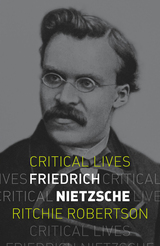
Friedrich Nietzsche
Ritchie Robertson
Reaktion Books, 2022
An accessible and informative study of the life and work of this vaunted German philosopher.
In this concise yet comprehensive critical biography, Ritchie Robertson examines the work of Friedrich Nietzsche within the context of his life. The book traces Nietzsche’s development from outstanding classical scholar to cultural critic, who measured Imperial Germany by the standards of ancient Greece. It follows him on his path from a prophet (in the persona of Zarathustra) to a savage polemicist against modern liberal values, offering a “philosophy of the future.” Robertson argues that Nietzsche’s middle-period writings offer a subtle and searching analysis of his culture, more rewarding than the strident and often-controversial later works. The book also assesses Nietzsche’s claim to be continuing the Enlightenment and shows that he valued reason, evidence, and fact, without which his historical case against Christianity would make no sense.
In this concise yet comprehensive critical biography, Ritchie Robertson examines the work of Friedrich Nietzsche within the context of his life. The book traces Nietzsche’s development from outstanding classical scholar to cultural critic, who measured Imperial Germany by the standards of ancient Greece. It follows him on his path from a prophet (in the persona of Zarathustra) to a savage polemicist against modern liberal values, offering a “philosophy of the future.” Robertson argues that Nietzsche’s middle-period writings offer a subtle and searching analysis of his culture, more rewarding than the strident and often-controversial later works. The book also assesses Nietzsche’s claim to be continuing the Enlightenment and shows that he valued reason, evidence, and fact, without which his historical case against Christianity would make no sense.
[more]
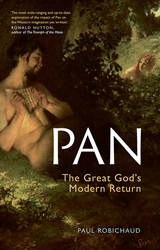
Pan
The Great God's Modern Return
Paul Robichaud
Reaktion Books, 2023
From ancient myth to contemporary art and literature, a beguiling look at the many incarnations of the mischievous—and culturally immortal—god Pan, now in paperback.
Pan—he of the cloven hoof and lustful grin, beckoning through the trees. From classical myth to modern literature, film, and music, the god Pan has long fascinated and terrified the western imagination. “Panic” is the name given to the peculiar feeling we experience in his presence. Still, the ways in which Pan has been imagined have varied wildly—fitting for a god whose very name the ancients confused with the Greek word meaning “all.” Part-goat, part-man, Pan bridges the divide between the human and animal worlds. In exquisite prose, Paul Robichaud explores how Pan has been imagined in mythology, art, literature, music, spirituality, and popular culture through the centuries. At times, Pan is a dangerous, destabilizing force; sometimes, a source of fertility and renewal. His portrayals reveal shifting anxieties about our own animal impulses and our relationship to nature. Always the outsider, he has been the god of choice for gay writers, occult practitioners, and New Age mystics. And although ancient sources announced his death, he has lived on through the work of Arthur Machen, Gustav Mahler, Kenneth Grahame, D. H. Lawrence, and countless others. Pan: The Great God’s Modern Return traces his intoxicating dance.
Pan—he of the cloven hoof and lustful grin, beckoning through the trees. From classical myth to modern literature, film, and music, the god Pan has long fascinated and terrified the western imagination. “Panic” is the name given to the peculiar feeling we experience in his presence. Still, the ways in which Pan has been imagined have varied wildly—fitting for a god whose very name the ancients confused with the Greek word meaning “all.” Part-goat, part-man, Pan bridges the divide between the human and animal worlds. In exquisite prose, Paul Robichaud explores how Pan has been imagined in mythology, art, literature, music, spirituality, and popular culture through the centuries. At times, Pan is a dangerous, destabilizing force; sometimes, a source of fertility and renewal. His portrayals reveal shifting anxieties about our own animal impulses and our relationship to nature. Always the outsider, he has been the god of choice for gay writers, occult practitioners, and New Age mystics. And although ancient sources announced his death, he has lived on through the work of Arthur Machen, Gustav Mahler, Kenneth Grahame, D. H. Lawrence, and countless others. Pan: The Great God’s Modern Return traces his intoxicating dance.
[more]
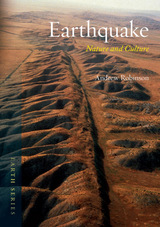
Earthquake
Nature and Culture
Andrew Robinson
Reaktion Books, 2012
The 2011 devastating, tsunami-triggering quake off the coast of Japan and 2010’s horrifying destruction in Haiti reinforce the fact that large cities in every continent are at risk from earthquakes. Quakes threaten Los Angeles, Beijing, Cairo, Delhi, Singapore, and many more cities, and despite advances in earthquake science and engineering and improved disaster preparedness by governments and international aid agencies, they continue to cause immense loss of life and property damage.
Earthquake explores the occurrence of major earthquakes around the world, their effects on the societies where they strike, and the other catastrophes they cause, from landslides and fires to floods and tsunamis. Examining the science involved in measuring and explaining earthquakes, Andrew Robinson looks at our attempts to design against their consequences and the possibility of having the ability to predict them one day. Robinson also delves into the ways nations have mythologized earthquakes through religion and the arts—Norse mythology explained earthquakes as the violent struggling of the god Loki as he was punished for murdering another god, the ancient Greeks believed Poseidon caused earthquakes whenever he was in a bad mood or wanted to punish people, and Japanese mythology states that Namazu, a giant catfish, triggers quakes when he thrashes around. He discusses the portrayal of earthquakes in popular culture, where authors and filmmakers often use the memory of cities laid to waste—such as Kobe, Japan, in 1995 or San Francisco in 1906—or imagine the hypothetical “Big One,” the earthquake expected someday out of California’s San Andreas Fault.
With tremors happening in seemingly implausible places like Chicago and Washington DC, Earthquake is a timely book that will enrich earthquake scholarship and enlighten anyone interested in these ruinous natural disasters.
[more]
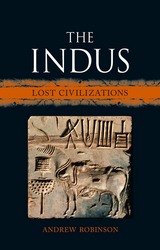
The Indus
Lost Civilizations
Andrew Robinson
Reaktion Books, 2015
The Indus civilization flourished for half a millennium from about 2600 to 1900 BCE, when it mysteriously declined and vanished from view. It remained invisible for almost four thousand years, until its ruins were discovered in the 1920s by British and Indian archaeologists. Today, after almost a century of excavation, it is regarded as the beginning of Indian civilization and possibly the origin of Hinduism. The Indus: Lost Civilizations is an accessible introduction to every significant aspect of an extraordinary and tantalizing “lost” civilization, which combined artistic excellence, technological sophistication, and economic vigor with social egalitarianism, political freedom, and religious moderation. The book also discusses the vital legacy of the Indus civilization in India and Pakistan today.
[more]
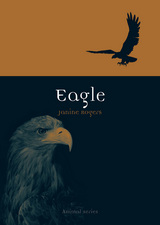
Eagle
Janine Rogers
Reaktion Books, 2015
A symbol of power, divinity, war, and justice, the eagle has been one of the most dominant birds in the human imagination for millennia. Exploring the rich history of this bird and its portrayal in art, film, literature, and poetry, this book examines how eagles became an emblematic creature that also embodies the paradoxes of our existence.
Janine Rogers reveals that while humans associate eagles with light and learning, they also connect the birds to death and corruption. Eagles adorn flags, crests, and other emblems, but as she shows, they have also been relentlessly persecuted and perceived as predatory threats to livestock. While considering these contradictions, Rogers argues that eagles have suffered from the effects of human activities for years, from pesticide use to habitat destruction and global warming. She demonstrates the dangers of not saving eagles from destruction, as they are key to controlling pest populations and clearing carcasses. Featuring many illustrations of eagles in the wild, art, and popular culture, Eagle shines new light on our complex relationship with these birds, their international significance, and the dire implications of losing them to contemporary ecological threats.
Janine Rogers reveals that while humans associate eagles with light and learning, they also connect the birds to death and corruption. Eagles adorn flags, crests, and other emblems, but as she shows, they have also been relentlessly persecuted and perceived as predatory threats to livestock. While considering these contradictions, Rogers argues that eagles have suffered from the effects of human activities for years, from pesticide use to habitat destruction and global warming. She demonstrates the dangers of not saving eagles from destruction, as they are key to controlling pest populations and clearing carcasses. Featuring many illustrations of eagles in the wild, art, and popular culture, Eagle shines new light on our complex relationship with these birds, their international significance, and the dire implications of losing them to contemporary ecological threats.
[more]

Cat
Katharine M. Rogers
Reaktion Books, 2006
According to ancient Egyptian lore, the goddess Bast, who protected her worshippers from disease and hard luck, had the figure of a woman and the head of a cat. Egyptians loved their feline companions, including them in family portraits, mummifying them alongside their owners, and creating exquisite works of sculpture around their graceful forms.
Four thousand years later, the cat continues to charm us. Katharine M. Rogers traces our relationship with this curious creature in Cat, an entertaining look at one of the most popular pets in the world. From the domestic cat’s emergence in ancient Egypt to its enormous popularity in the contemporary United States, Rogers uncovers the feline’s cultural history in all its numerous forms: rat-catcher, witch’s familiar, and even the inscrutable creature that inspired Lewis Carroll and Edgar Allan Poe. As Rogers demonstrates, our fascination with cats lies in their uncanny ability to embody just about any character—from sweet to ferocious, affectionate to independent, eerie to elegant.
Cat will be relished by anyone who appreciates these lovable companions and their amazing ability to bring joy to our lives.
Four thousand years later, the cat continues to charm us. Katharine M. Rogers traces our relationship with this curious creature in Cat, an entertaining look at one of the most popular pets in the world. From the domestic cat’s emergence in ancient Egypt to its enormous popularity in the contemporary United States, Rogers uncovers the feline’s cultural history in all its numerous forms: rat-catcher, witch’s familiar, and even the inscrutable creature that inspired Lewis Carroll and Edgar Allan Poe. As Rogers demonstrates, our fascination with cats lies in their uncanny ability to embody just about any character—from sweet to ferocious, affectionate to independent, eerie to elegant.
Cat will be relished by anyone who appreciates these lovable companions and their amazing ability to bring joy to our lives.
[more]
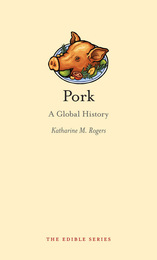
Pork
A Global History
Katharine M. Rogers
Reaktion Books, 2012
“Pork. The Other White Meat.” The well known National Pork Board slogan doesn’t begin to describe the many types of meat that fall under the umbrella of “pork.” The most versatile of meats, pork ranges from the rich, delicate succulence of a roast loin to the dry, salty assertiveness of pancetta and bacon. Since the Roman Empire, it has also been the most widely eaten meat—it formed the high point of Roman feasts and was the mainstay of the traditional working class diet in Europe and North America.
Pork: A Global History follows the transition of pork from fashionable food to popular fare while also exploring the many edible parts of a pig and ways they are prepared. Katharine Rogers depicts how pork stopped being featured at aristocratic banquets and in high-end cookbooks as it became associated with the lower and middle classes. She explains how European settlers brought pork to the Americas and that barrel pork, kept submerged in a barrel of brine, was a staple of working class people in the United States. While roast suckling pig remains the most luxurious form of pork, Rogers reveals that people also use pig’s blood to make black puddings, its tail to flavor soups and stews, and its fat for frying and as a pastry shortening. Beautifully illustrated and filled with recipes from around the world, Pork will be a necessary addition to the bookshelf of any lover of bacon, sausage, and pork chops.
[more]
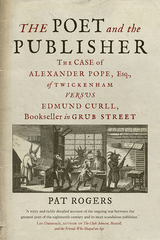
The Poet and the Publisher
The Case of Alexander Pope, Esq., of Twickenham versus Edmund Curll, Bookseller in Grub Street
Pat Rogers
Reaktion Books, 2021
“Drawing on deep familiarity with the period and its personalities, Rogers has given us a witty and richly detailed account of the ongoing war between the greatest poet of the eighteenth century and its most scandalous publisher.”—Leo Damrosch, author of The Club: Johnson, Boswell, and the Friends Who Shaped an Age
“What sets Rogers’s history apart is his ability to combine fastidious research with lucid, unpretentious prose. History buffs and literary-minded readers alike are in for a punchy, drama-filled treat.”—Publishers Weekly
The quarrel between the poet Alexander Pope and the publisher Edmund Curll has long been a notorious episode in the history of the book, when two remarkable figures with a gift for comedy and an immoderate dislike of each other clashed publicly and without restraint. However, it has never, until now, been chronicled in full. Ripe with the sights and smells of Hanoverian London, The Poet and Publisher details their vitriolic exchanges, drawing on previously unearthed pamphlets, newspaper articles, and advertisements, court and government records, and personal letters. The story of their battles in and out of print includes a poisoning, the pillory, numerous instances of fraud, and a landmark case in the history of copyright. The book is a forensic account of events both momentous and farcical, and it is indecently entertaining.
“What sets Rogers’s history apart is his ability to combine fastidious research with lucid, unpretentious prose. History buffs and literary-minded readers alike are in for a punchy, drama-filled treat.”—Publishers Weekly
The quarrel between the poet Alexander Pope and the publisher Edmund Curll has long been a notorious episode in the history of the book, when two remarkable figures with a gift for comedy and an immoderate dislike of each other clashed publicly and without restraint. However, it has never, until now, been chronicled in full. Ripe with the sights and smells of Hanoverian London, The Poet and Publisher details their vitriolic exchanges, drawing on previously unearthed pamphlets, newspaper articles, and advertisements, court and government records, and personal letters. The story of their battles in and out of print includes a poisoning, the pillory, numerous instances of fraud, and a landmark case in the history of copyright. The book is a forensic account of events both momentous and farcical, and it is indecently entertaining.
[more]
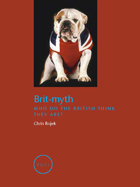
Brit-Myth
Who Do the British Think They Are?
Chris Rojek
Reaktion Books, 2007
The world sees Britain through the antics of Monty Python’s Flying Circus, the stiff-lipped, painfully class-conscious societies depicted in Gosford Parkand Remains of the Day, and the scathing diatribes of American Idol’s Simon Cowell. The images being projected from the island nation of England are so disparate these days that it’s hard to know what to think of the British. Chris Rojek explores this dilemma, looking at the myths, misconceptions, and stereotypes of the British.
Drawing upon a wide range of sources in pop culture, politics, art, and history, Rojek examines how Britons are viewed both at home and abroad. From Austin Powers to King Arthur and Albion, and from Big Brother to international opinion polls, Rojek investigates what it means to be British in a globalized, multicultural world. Brit-Myth deftly avoids extreme nationalism or abstract scholarship, offering a new conception of Britishness that transcends race and emphasizes the integral role of individualism and nonconformity in British identity.
Full of thought-provoking insights and engaging anecdotes, Brit-Myth will entertain both Anglophiles and those who want to learn more about the land under the Union Jack.
Full of thought-provoking insights and engaging anecdotes, Brit-Myth will entertain both Anglophiles and those who want to learn more about the land under the Union Jack.
[more]

Celebrity
Chris Rojek
Reaktion Books, 2001
In contemporary society, the cult of celebrity is inescapable. Anyone can be turned into a celebrity, and anything can be made into a celebrity event. Celebrity has become a part of everyday life, a common reference point. But how have people like Elvis Presley, John Lennon, Bill Clinton or Princess Diana impressed themselves so powerfully on the public mind? Do they have unique qualities, or have their images been constructed by the media? And what of the dark side of celebrity – why is the hunger to be in the public eye so great that people are prepared to go to any lengths to achieve it, as numerous mass murderers and serial killers have done.
Chris Rojek brings together celebrated figures from the arts, sports, politics and other public spheres, from O.J. Simpson and Marilyn Monroe to Hitler and David Bowie, and touches on many movements and fads, including punk, rock-and-roll and fashion. Rojek analyzes the difference between ascribed celebrity, which derives from bloodline, and achieved celebrity, which follows on from personal achievement - the difference between Princess Margaret and, say, Woody Allen. He also shows how there is no parallel in history to today's ubiquitous "living" form of celebrity, powered by newspapers, PR departments, magazines and electronic mass media.
Chris Rojek brings together celebrated figures from the arts, sports, politics and other public spheres, from O.J. Simpson and Marilyn Monroe to Hitler and David Bowie, and touches on many movements and fads, including punk, rock-and-roll and fashion. Rojek analyzes the difference between ascribed celebrity, which derives from bloodline, and achieved celebrity, which follows on from personal achievement - the difference between Princess Margaret and, say, Woody Allen. He also shows how there is no parallel in history to today's ubiquitous "living" form of celebrity, powered by newspapers, PR departments, magazines and electronic mass media.
[more]
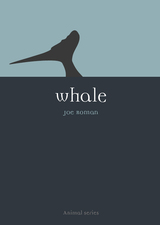
Whale
Joe Roman
Reaktion Books, 2005
One hundred years ago, a beached whale would have been greeted by a mob wielding flensing knives; today, people bring harnesses and boats to help it return to the sea. The whale is one of the most awe-inspiring and intelligent animals in nature, sharing a complex relationship with humans that has radically evolved over the centuries. Joe Roman offers in Whale a fascinating and in-depth look at the cultural and natural history of these majestic aquatic mammals.
From the Biblical prophet Jonah to Moby-Dick to recent discoveries of cetacean songs and culture, Roman examines the whale's role in history, art, literature, commerce, and science. Whale features vibrant illustrations, ranging from Stone Age carvings to full-color underwater photographs, which vividly bring to life the rich symbolic meanings surrounding the whale. Roman also examines the ecological and evolutionary history of the whale as well as contemporary issues of conservation. Whale is an engaging volume that will appeal to all those interested in the important role that these kings of the ocean have played in human culture.
From the Biblical prophet Jonah to Moby-Dick to recent discoveries of cetacean songs and culture, Roman examines the whale's role in history, art, literature, commerce, and science. Whale features vibrant illustrations, ranging from Stone Age carvings to full-color underwater photographs, which vividly bring to life the rich symbolic meanings surrounding the whale. Roman also examines the ecological and evolutionary history of the whale as well as contemporary issues of conservation. Whale is an engaging volume that will appeal to all those interested in the important role that these kings of the ocean have played in human culture.
[more]
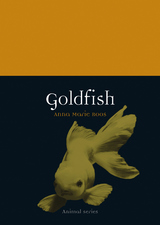
Goldfish
Anna Marie Roos
Reaktion Books, 2019
Living work of art, consumer commodity, scientific hero, and environmental menace: the humble goldfish is the ultimate human cultural artifact. A creature of supposedly little memory and a short lifespan, it has held universal appeal as a reservoir for human ideas and ideals. In ancient China, goldfish were saved from predators in acts of religious reverence and selectively bred for their glittering grace. In the East, they became the subject of exquisite art, regarded as living flowers that moved, while in the West, they became ubiquitous residents of the Victorian parlor. Cheap and eminently available, today they are bred by the millions for the growing domestic pet market, while also proving to be important to laboratory studies of perception, vision, and intelligence.
In this illuminating homage to the goldfish, Anna Marie Roos blends art and science to trace the surprising and intriguing history of this much-loved animal, challenging our cultural preconceptions of a creature often thought to be common and disposable.
In this illuminating homage to the goldfish, Anna Marie Roos blends art and science to trace the surprising and intriguing history of this much-loved animal, challenging our cultural preconceptions of a creature often thought to be common and disposable.
[more]

An Eye for an Eye
A Global History of Crime and Punishment
Mitchel P. Roth
Reaktion Books, 2014
From “an eye for an eye” to debates over capital punishment, humanity has a long and controversial relationship with doling out justice for criminal acts. Today, crime and punishment remain significant parts of our culture, but societies vary greatly on what is considered criminal and how it should be punished. In this global survey of crime and punishment throughout history, Mitchel P. Roth examines how and why we penalize certain activities, and he scrutinizes the effectiveness of such efforts in both punishing wrongdoers and bringing a sense of justice to victims.
Drawing on anthropology, archaeology, folklore, and literature, Roth chronicles the global history of crime and punishment—from early civilizations to the outlawing of sex crimes and serial homicide to the development of organized crime and the threat today of global piracy. He explores the birth of the penitentiary and the practice of incarceration as well as the modern philosophy of rehabilitation, arguing that these are perhaps the most important advances in the effort to safeguard citizens from harm. Looking closely at the retributions societies have condoned, Roth also look at execution and its many forms, showing how stoning, hemlock, the firing squad, and lethal injection are considered either barbaric or justified across different cultures. Ultimately, he illustrates that despite advances in every level of human experience, there is remarkable continuity in what is considered a crime and the sanctions administered.
Perfect for students, academics, and general readers alike, this interdisciplinary book provides a fascinating look at criminality and its consequences.
Drawing on anthropology, archaeology, folklore, and literature, Roth chronicles the global history of crime and punishment—from early civilizations to the outlawing of sex crimes and serial homicide to the development of organized crime and the threat today of global piracy. He explores the birth of the penitentiary and the practice of incarceration as well as the modern philosophy of rehabilitation, arguing that these are perhaps the most important advances in the effort to safeguard citizens from harm. Looking closely at the retributions societies have condoned, Roth also look at execution and its many forms, showing how stoning, hemlock, the firing squad, and lethal injection are considered either barbaric or justified across different cultures. Ultimately, he illustrates that despite advances in every level of human experience, there is remarkable continuity in what is considered a crime and the sanctions administered.
Perfect for students, academics, and general readers alike, this interdisciplinary book provides a fascinating look at criminality and its consequences.
[more]
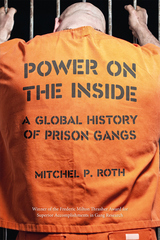
Power on the Inside
A Global History of Prison Gangs
Mitchel P. Roth
Reaktion Books, 2021
Power on the Inside is the first book to examine the historical development of prison gangs worldwide, from those that emerged inside mid-nineteenth-century Neapolitan prisons to the new generation of younger inmates challenging the status quo within gang subcultures today. Historian-criminologist Mitchel P. Roth examines prison gangs throughout the world, from the Americas, Oceania, and South Africa to Southeast Asia, Europe, and beyond. The book examines the many variables that influence the evolution of prison subcultures, from colonialism and population demographics to prison architecture and staff-prisoner relations. Power on the Inside features eighty historical and contemporary images and will inform professionals in the field as well as general readers who want to know more about the realities of prison gangs today.
[more]

Murder by Mail
A Global History of the Letter Bomb
Mitchel P. Roth
Reaktion Books, 2024
The explosive history of weaponized mail over hundreds of years.
This book unfolds the gripping history of weaponized mail, offering the first-ever comprehensive exploration of this sinister phenomenon. Spanning two centuries, Murder by Mail unveils the history of postal bombs, describing the evolution of both explosives and the postal services that facilitated their deadly use. From an eighteenth-century incident involving Jonathan Swift to modern acts of terror by groups like the IRA, Suffragettes, and lone actors such as the Unabomber, it uncovers the surprising ubiquity of mail bombs.
This chronological account meticulously covers each decade, from early anarchists and world wars through the Cold War to the rise of the serial bomber. Astounding in scope, this book sheds light on the psychopathy, motivations, and political implications behind murder by mail.
This book unfolds the gripping history of weaponized mail, offering the first-ever comprehensive exploration of this sinister phenomenon. Spanning two centuries, Murder by Mail unveils the history of postal bombs, describing the evolution of both explosives and the postal services that facilitated their deadly use. From an eighteenth-century incident involving Jonathan Swift to modern acts of terror by groups like the IRA, Suffragettes, and lone actors such as the Unabomber, it uncovers the surprising ubiquity of mail bombs.
This chronological account meticulously covers each decade, from early anarchists and world wars through the Cold War to the rise of the serial bomber. Astounding in scope, this book sheds light on the psychopathy, motivations, and political implications behind murder by mail.
[more]
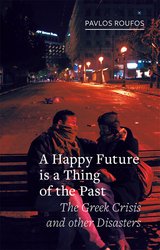
A Happy Future Is a Thing of the Past
The Greek Crisis and Other Disasters
Pavlos Roufos
Reaktion Books, 2018
Since 2010, Greece’s social and economic conditions have been irreversibly transformed due to austerity measures imposed by the European troika and successive Greek governments. These stringent restructuring programs were intended to make it possible for Greece to avoid default and improve its debt position, and to reconfigure its economy to escape forever the burden of past structural deficiencies. But things have not gone according to plan. Eight years later, none of these targets have been met. If the programs were doomed to fail from the start, as many claim, what were the real objectives of such devastating austerity?
In this latest installment in Reaktion's Field Notes series, published in association with the Brooklyn Rail, Pavlos Roufos answers this key question in an insightful, critical analysis of the origins and management of the 2010 Greek economic crisis. Setting the crisis in its historical context, Roufos explores the creation of the Eurozone, its “glorious” years, and today’s political threats to its existence. By interweaving stories of individual people’s lived experiences and describing in detail the politicians, policies, personalities, and events at the heart of the collapse, he situates its development both in terms of the particularities of the Greek economy and society and the overall architecture of Europe’s monetary union. This broad examination also illuminates the social movements that emerged in Greece in response to the crisis, unpacking what both the crisis managers and many of their critics presented as a given: that a happy future is a thing of the past.
In this latest installment in Reaktion's Field Notes series, published in association with the Brooklyn Rail, Pavlos Roufos answers this key question in an insightful, critical analysis of the origins and management of the 2010 Greek economic crisis. Setting the crisis in its historical context, Roufos explores the creation of the Eurozone, its “glorious” years, and today’s political threats to its existence. By interweaving stories of individual people’s lived experiences and describing in detail the politicians, policies, personalities, and events at the heart of the collapse, he situates its development both in terms of the particularities of the Greek economy and society and the overall architecture of Europe’s monetary union. This broad examination also illuminates the social movements that emerged in Greece in response to the crisis, unpacking what both the crisis managers and many of their critics presented as a given: that a happy future is a thing of the past.
[more]

East Asia Modern
Shaping the Contemporary City
Peter Rowe
Reaktion Books, 2005
An exciting explosion of urban expansion is occurring in East Asia: cities such as Singapore, Taipei, Seoul, Tokyo, Beijing, and Shanghai are expanding at a prodigious rate and bringing widespread change to the region. Peter G. Rowe's East Asia Modern is a timely comparative analysis of urban growth in this rapidly evolving part of the globe.
A renowned scholar on East Asian architecture and urbanism, Peter G. Rowe examines how the unique modernizing process of East Asian cities can be most usefully understood. Rowe offers a historical assessment of the region, chronicling the cities' development over the last century and setting into context their individual paths toward becoming modern. Rowe explains what the modernizing process has meant for the cultural diffusion of predominantly Western ideas, how East Asian urban regions have developed a distinct type of modernity, and what lessons can be gleaned from the contemporary East Asian experience. Refuting many common misconceptions about contemporary East Asian life, East Asia Modern offers a readable critical assessment of life in modern East Asia while also pointing to possibilities for the future.
A renowned scholar on East Asian architecture and urbanism, Peter G. Rowe examines how the unique modernizing process of East Asian cities can be most usefully understood. Rowe offers a historical assessment of the region, chronicling the cities' development over the last century and setting into context their individual paths toward becoming modern. Rowe explains what the modernizing process has meant for the cultural diffusion of predominantly Western ideas, how East Asian urban regions have developed a distinct type of modernity, and what lessons can be gleaned from the contemporary East Asian experience. Refuting many common misconceptions about contemporary East Asian life, East Asia Modern offers a readable critical assessment of life in modern East Asia while also pointing to possibilities for the future.
[more]
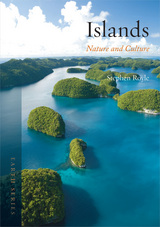
Islands
Nature and Culture
Stephen A. Royle
Reaktion Books, 2014
From Charles Darwin’s enlightening voyage to the Galapagos Islands to moat-encased prisons incarcerating the world’s deadliest prisoners, islands have been sites of immense scientific, political, and creative importance. An inspiration for artists and writers, they can be lively centers of holiday revelry or remote, mysterious spots; places of escape or of exile and imprisonment. In this cultural and scientific history of these alluring, isolated territories, Stephen A. Royle describes the great variety of islands, their economies, and the animals, plants, and people who thrive on them.
Royle shows that despite the view of some islands as earthly paradises, they are often beset by severe limitations in both resources and opportunities. Detailing the population loss many islands have faced in recent years, he considers how islanders have developed their homes into tourist destinations in order to combat economic instability. He also explores their exotic, otherworldly beauty and the ways they have provided both refuge and inspiration for artists, such as Paul Gauguin in Tahiti and George Orwell on the Scottish island of Jura. Filled with illustrations, Islands is a compelling and comprehensive survey of the geographical and cultural aspects of island life.
Royle shows that despite the view of some islands as earthly paradises, they are often beset by severe limitations in both resources and opportunities. Detailing the population loss many islands have faced in recent years, he considers how islanders have developed their homes into tourist destinations in order to combat economic instability. He also explores their exotic, otherworldly beauty and the ways they have provided both refuge and inspiration for artists, such as Paul Gauguin in Tahiti and George Orwell on the Scottish island of Jura. Filled with illustrations, Islands is a compelling and comprehensive survey of the geographical and cultural aspects of island life.
[more]
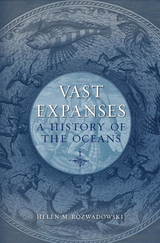
Vast Expanses
A History of the Oceans
Helen M. Rozwadowski
Reaktion Books, 2019
Much of human experience can be distilled to saltwater: tears, sweat, and an enduring connection to the sea. In Vast Expanses, Helen M. Rozwadowski weaves a cultural, environmental, and geopolitical history of that relationship, a journey of tides and titanic forces reaching around the globe and across geological and evolutionary time.
Our ancient connections with the sea have developed and multiplied through industrialization and globalization, a trajectory that runs counter to Western depictions of the ocean as a place remote from and immune to human influence. Rozwadowski argues that knowledge about the oceans—created through work and play, scientific investigation, and also through human ambitions for profiting from the sea—has played a central role in defining our relationship with this vast, trackless, and opaque place. It has helped us to exploit marine resources, control ocean space, extend imperial or national power, and attempt to refashion the sea into a more tractable arena for human activity.
But while deepening knowledge of the ocean has animated and strengthened connections between people and the world’s seas, to understand this history we must address questions of how, by whom, and why knowledge of the ocean was created and used—and how we create and use this knowledge today. Only then can we can forge a healthier relationship with our future sea.
Our ancient connections with the sea have developed and multiplied through industrialization and globalization, a trajectory that runs counter to Western depictions of the ocean as a place remote from and immune to human influence. Rozwadowski argues that knowledge about the oceans—created through work and play, scientific investigation, and also through human ambitions for profiting from the sea—has played a central role in defining our relationship with this vast, trackless, and opaque place. It has helped us to exploit marine resources, control ocean space, extend imperial or national power, and attempt to refashion the sea into a more tractable arena for human activity.
But while deepening knowledge of the ocean has animated and strengthened connections between people and the world’s seas, to understand this history we must address questions of how, by whom, and why knowledge of the ocean was created and used—and how we create and use this knowledge today. Only then can we can forge a healthier relationship with our future sea.
[more]
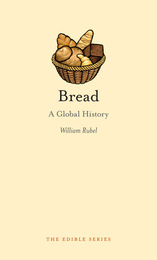
Bread
A Global History
William Rubel
Reaktion Books, 2011
It is difficult to think of a food more basic, more essential, and more universal than bread. Common to the diets of both the rich and the poor, bread is one of our oldest foods. Loaves and rolls have been found in ancient Egyptian tombs, and wheat has been found in pits where human settlements flourished 8,000 years ago. Many anthropologists argue that the ability to sow and reap cereals, the grains necessary for making bread, could be one of the main reasons why man settled in communities, and even today the concept of “breaking bread together” is a lasting symbol of the uniting power of a meal.
Bread is an innovative mix of traditional history, cultural history, travelogue, and cookbook. William Rubel begins with the amazing invention of bread approximately 20,000 years ago in the Fertile Crescent and ends by speculating on the ways in which cultural forces and advances in biotechnology may influence the development of bread in the twenty-first century. Rubel shows how simple choices, may be responsible for the widespread preference for wheat over other bread grains and for the millennia-old association of elite dining with white bread. He even provides an analysis of the different components of bread, such as crust and crumb, so that readers may better understand the breads they buy. With many recipes integrated with the text and a glossary covering one hundred breads, Bread goes well beyond the simple choice of white or wheat.
Here, general readers will find an approachable introduction to the history of bread and to the many forms that bread takes throughout the world, and bread bakers will discover a history of the craft and new ways of thinking that will inspire experimentation.
[more]
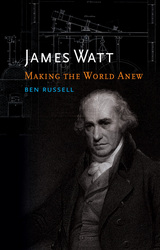
James Watt
Making the World Anew
Ben Russell
Reaktion Books, 2014
Scottish inventor and mechanical engineer James Watt (1736–1819) is best known for his pioneering work on the steam engine that became fundamental to the incredible changes and developments wrought by the Industrial Revolution. But in this new biography, Ben Russell tells a much bigger, richer story, peering over Watt’s shoulder to more fully explore the processes he used and how his ephemeral ideas were transformed into tangible artifacts. Over the course of the book, Russell reveals as much about the life of James Watt as he does a history of Britain’s early industrial transformation and the birth of professional engineering.
To record this fascinating narrative, Russell draws on a wide range of resources—from archival material to three-dimensional objects to scholarship in a diversity of fields from ceramics to antique machine-making. He explores Watt’s early years and interest in chemistry and examines Watt’s partnership with Matthew Boulton, with whom he would become a successful and wealthy man. In addition to discussing Watt’s work and incredible contributions that changed societies around the world, Russell looks at Britain’s early industrial transformation. Published in association with the Science Museum London, and with seventy illustrations, James Watt is not only an intriguing exploration of the engineer’s life, but also an illuminating journey into the broader practices of invention in the eighteenth and early nineteenth centuries.
To record this fascinating narrative, Russell draws on a wide range of resources—from archival material to three-dimensional objects to scholarship in a diversity of fields from ceramics to antique machine-making. He explores Watt’s early years and interest in chemistry and examines Watt’s partnership with Matthew Boulton, with whom he would become a successful and wealthy man. In addition to discussing Watt’s work and incredible contributions that changed societies around the world, Russell looks at Britain’s early industrial transformation. Published in association with the Science Museum London, and with seventy illustrations, James Watt is not only an intriguing exploration of the engineer’s life, but also an illuminating journey into the broader practices of invention in the eighteenth and early nineteenth centuries.
Published in association with the Science Museum, London
[more]

Fernando Pessoa
Bartholomew Ryan
Reaktion Books, 2024
A critical biography of the modernist Portuguese writer.
As a young man Fernando Pessoa aspired to, as he put it, “be plural like the universe.” He would fulfill this desire by inventing over one hundred fictional alter-egos which he called heteronyms. Beginning with Pessoa’s early days in Portugal, this philosophical biography explores the life, work, and imaginative universe of this modernist pioneer. Bartholomew Ryan offers a detailed overview of Pessoa’s writings on radical politics, his ventures into esoteric realms, and his expertise in astrology. Along the way, Ryan unravels Pessoa’s real and literary relationships and explores his unfinished prose masterpiece, The Book of Disquiet. This is a compelling, timely exploration of Pessoa’s profound, innovative ideas.
As a young man Fernando Pessoa aspired to, as he put it, “be plural like the universe.” He would fulfill this desire by inventing over one hundred fictional alter-egos which he called heteronyms. Beginning with Pessoa’s early days in Portugal, this philosophical biography explores the life, work, and imaginative universe of this modernist pioneer. Bartholomew Ryan offers a detailed overview of Pessoa’s writings on radical politics, his ventures into esoteric realms, and his expertise in astrology. Along the way, Ryan unravels Pessoa’s real and literary relationships and explores his unfinished prose masterpiece, The Book of Disquiet. This is a compelling, timely exploration of Pessoa’s profound, innovative ideas.
[more]
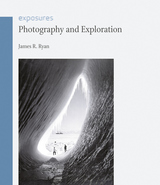
Photography and Exploration
James R. Ryan
Reaktion Books, 2013
When Ferdinand Magellan set out to circumnavigate the globe in 1519, he wasn’t able to bring a digital camera or a smartphone with him. Yet, as the eagerly awaited images from the Mars rover prove, modern exploration is inconceivable without photography. Since its invention in 1839, photography has been integral to exploration, used by explorers, sponsors, and publishers alike, and the early twentieth century, advances in technology—and photography’s newfound cultural currency as a truthful witness to the world—made the camera an indispensable tool. In Photography and Exploration, James R. Ryan uses a variety of examples, from polar journeys to space missions, to show how exploration photographs have been created, circulated, and consumed as objects of both scientific research and art.
Examining a wide range of photographs and expeditions, Ryan considers how nations have often employed images as a means to scientific advancement or territorial conquest. He argues that because exploration has long been bound up with the construction of national and imperial identity, expeditionary photographs have often been used to promote claims to power—especially by the West. These images also challenge the way audiences perceive the world and their place within it. Featuring one hundred images, Photography and Exploration shines new light on how photography has shaped the image of explorers, expeditions, and the worlds they discovered.
[more]
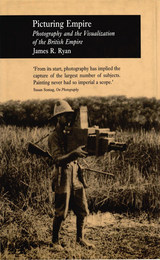
Picturing Empire
Photography and the Visualization of the British Empire
James R. Ryan
Reaktion Books, 1998
Coinciding with the extraordinary expansion of Britain's overseas empire under Queen Victoria, the invention of photography allowed millions to see what they thought were realistic and unbiased pictures of distant peoples and places. This supposed accuracy also helped to legitimate Victorian geography's illuminations of the "darkest" recesses of the globe with the "light" of scientific mapping techniques.
But as James R. Ryan argues in Picturing Empire, Victorian photographs reveal as much about the imaginative landscapes of imperial culture as they do about the "real" subjects captured within their frames. Ryan considers the role of photography in the exploration and domestication of foreign landscapes, in imperial warfare, in the survey and classification of "racial types," in "hunting with the camera," and in teaching imperial geography to British schoolchildren.
Ryan's careful exposure of the reciprocal relation between photographic image and imperial imagination will interest all those concerned with the cultural history of the British Empire.
But as James R. Ryan argues in Picturing Empire, Victorian photographs reveal as much about the imaginative landscapes of imperial culture as they do about the "real" subjects captured within their frames. Ryan considers the role of photography in the exploration and domestication of foreign landscapes, in imperial warfare, in the survey and classification of "racial types," in "hunting with the camera," and in teaching imperial geography to British schoolchildren.
Ryan's careful exposure of the reciprocal relation between photographic image and imperial imagination will interest all those concerned with the cultural history of the British Empire.
[more]
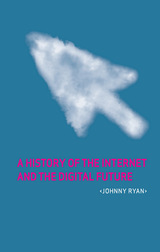
A History of the Internet and the Digital Future
Johnny Ryan
Reaktion Books, 2010
A History of the Internet and the Digital Future tells the story of the development of the Internet from the 1950s to the present and examines how the balance of power has shifted between the individual and the state in the areas of censorship, copyright infringement, intellectual freedom, and terrorism and warfare. Johnny Ryan explains how the Internet has revolutionized political campaigns; how the development of the World Wide Web enfranchised a new online population of assertive, niche consumers; and how the dot-com bust taught smarter firms to capitalize on the power of digital artisans. From the government-controlled systems of the Cold War to today’s move towards cloud computing, user-driven content, and the new global commons, this book reveals the trends that are shaping the businesses, politics, and media of the digital future.
[more]
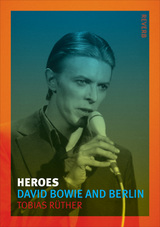
Heroes
David Bowie and Berlin
Tobias Rüther
Reaktion Books, 2014
In 1976, David Bowie left Los Angeles and the success of his celebrated albums Diamond Dogs and Young Americans for Europe. The rocker settled in Berlin, where he would make his “Berlin Trilogy”—the albums Low, Heroes, and Lodger, which are now considered some of the most critically acclaimed and innovative of the late twentieth century. But Bowie’s time in Berlin was about more than producing new music. As Tobias Rüther describes in this fascinating tale of Bowie’s Berlin years, the musician traveled to West Berlin—the capital of his childhood dreams and the city of Expressionism—to repair his body and mind from the devastation of drug addiction, delusions, and mania.
Painting a vivid picture of Bowie’s life in the Schöneberg area of the city, Rüther describes the artist’s friendships and collaborations with his roommate, Iggy Pop, as well as Brian Eno and Tony Visconti. Rüther illustrates Bowie’s return to painting, days cycling to the Die Brücke museum, and his exploration of the city’s nightlife, both the wild side and the gay scene. In West Berlin, Bowie also met singer and actress Romy Haag; came to know Hansa Studios, where he would record Low and Heroes; and even landed the part of a Prussian aristocrat in Just a Gigolo, starring alongside Marlene Dietrich. Eventually Rüther uses Bowie and his explorations of the cultural and historical undercurrents of West Berlin to examine the city itself: divided, caught in the Cold War, and how it began to redefine itself as a cultural metropolis, turning to the arts to start a new history.
Tying in with an exhibition at the Museum of Contemporary Art, Chicago, in September, 2014, Heroes tells the fascinating story of how the music of the future arose from the spirit of the past. It is an unforgettable look at one of the world’s most renowned musicians in one of its most inspiring cities.
Painting a vivid picture of Bowie’s life in the Schöneberg area of the city, Rüther describes the artist’s friendships and collaborations with his roommate, Iggy Pop, as well as Brian Eno and Tony Visconti. Rüther illustrates Bowie’s return to painting, days cycling to the Die Brücke museum, and his exploration of the city’s nightlife, both the wild side and the gay scene. In West Berlin, Bowie also met singer and actress Romy Haag; came to know Hansa Studios, where he would record Low and Heroes; and even landed the part of a Prussian aristocrat in Just a Gigolo, starring alongside Marlene Dietrich. Eventually Rüther uses Bowie and his explorations of the cultural and historical undercurrents of West Berlin to examine the city itself: divided, caught in the Cold War, and how it began to redefine itself as a cultural metropolis, turning to the arts to start a new history.
Tying in with an exhibition at the Museum of Contemporary Art, Chicago, in September, 2014, Heroes tells the fascinating story of how the music of the future arose from the spirit of the past. It is an unforgettable look at one of the world’s most renowned musicians in one of its most inspiring cities.
[more]
READERS
Browse our collection.
PUBLISHERS
See BiblioVault's publisher services.
STUDENT SERVICES
Files for college accessibility offices.
UChicago Accessibility Resources
home | accessibility | search | about | contact us
BiblioVault ® 2001 - 2024
The University of Chicago Press









